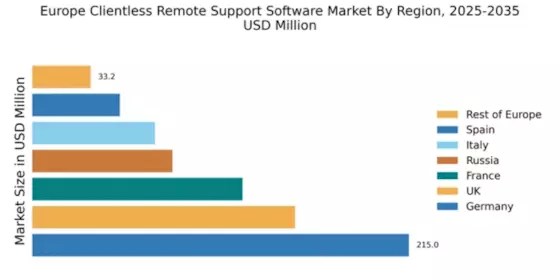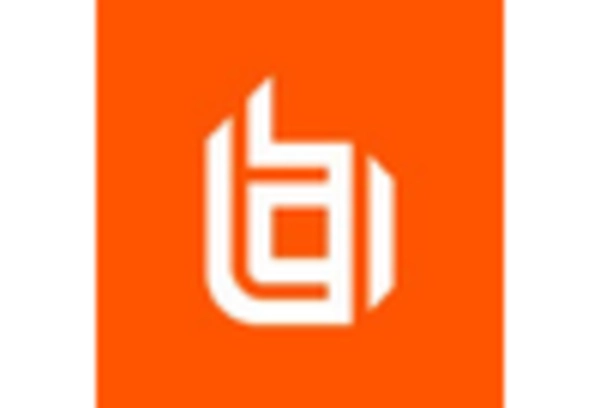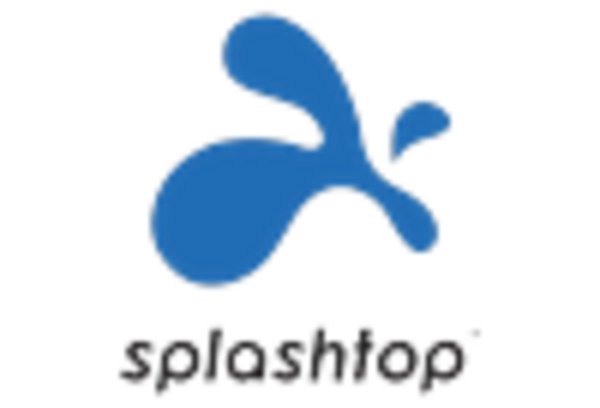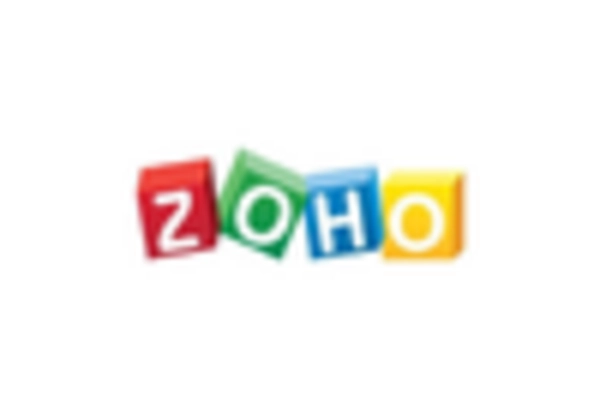Germany : Strong Demand and Innovation Hub
Key markets include major cities like Berlin, Munich, and Frankfurt, where tech startups and established enterprises thrive. The competitive landscape features strong players like TeamViewer, which is headquartered in Germany, alongside international competitors like LogMeIn and Zoho. The local business environment is characterized by a high level of innovation and collaboration between tech firms and educational institutions, particularly in sectors like IT services and telecommunications.
UK : Adoption Driven by Diverse Industries
Key markets include London, Manchester, and Birmingham, where a mix of startups and established firms drive demand. The competitive landscape features major players like LogMeIn and Splashtop, alongside local firms. The UK market is characterized by a strong emphasis on customer service and user experience, with applications spanning IT support, education, and telehealth, reflecting the diverse needs of its industries.
France : Focus on Digital Transformation
Key markets include Paris, Lyon, and Marseille, where tech hubs are rapidly developing. The competitive landscape features significant players like Zoho and BeyondTrust, alongside local startups. The business environment is dynamic, with a focus on integrating remote support solutions in sectors such as e-commerce and education, reflecting the growing demand for efficient customer service and operational efficiency.
Russia : Market Potential in Transition
Key markets include Moscow and St. Petersburg, where tech companies are increasingly adopting remote support solutions. The competitive landscape includes both local and international players, with a focus on affordability and accessibility. The business environment is evolving, with a growing emphasis on cybersecurity and compliance, particularly in sectors like finance and healthcare, which are critical for market expansion.
Italy : Adoption in Key Sectors
Key markets include Milan, Rome, and Turin, where a mix of traditional and tech-driven businesses are emerging. The competitive landscape features players like TeamViewer and RemotePC, alongside local firms. The business environment is characterized by a strong focus on customer engagement and service efficiency, particularly in sectors such as e-commerce and logistics, which are increasingly reliant on remote support solutions.
Spain : Focus on Digital Innovation
Key markets include Madrid and Barcelona, where a vibrant startup ecosystem is emerging. The competitive landscape features players like Splashtop and ConnectWise, alongside local startups. The business environment is dynamic, with a focus on integrating remote support solutions in sectors such as hospitality and education, reflecting the growing demand for efficient service delivery and operational efficiency.
Rest of Europe : Varied Demand Across Regions
Key markets include countries like Belgium, Netherlands, and the Nordic region, where a mix of local and international players operate. The competitive landscape is characterized by a focus on affordability and accessibility, with major players like Dameware and RemotePC having a presence. The business environment varies significantly, with different sectors such as healthcare and education increasingly adopting remote support solutions to enhance service delivery.


















Leave a Comment